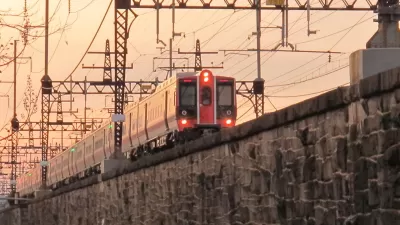After reading through dozens of long range transportation plans, I have to wonder if the planning profession is serious about improving mobility. By mobility, I mean improving the ability, speed, and efficiency of getting from point A to point B.
After reading through dozens of long range transportation plans, I have to wonder if the planning profession is serious about improving mobility. By mobility, I mean improving the ability, speed, and efficiency of getting from point A to point B.
This isn't the focus of most plans. On the contrary. These plans seemed focused on reducing mobility. Few, for example, recognize let alone make recommendations for reducing traffic congestion. In fact, David Hartgen at the University of North Carolina-Charlotte estimates that more than 40% of the American population will live in metropolitan areas with severe congestion (LOS F) by 2030 based on current trends and transportation plans. Twelve cities will have congestion equivalent to current day Los Angeles.
Instead, the programmatic focus of most Long Range Transportation Plans seems to be on: 1) improving options for small groups that use alternative transportation modes, such as bicycles, but have little overall impact on traffic patterns or regional mobility, 2) attempting to funnel more people onto public transit which usually results in longer commutes and trips, or 3) reducing travel overall (which of course reduces mobility).
At the core, it seems, improving mobility in the 21st century implies accepting, even embracing auto-mobility. This, of course, means planning for the car. Perhaps that's the real problem: the planning profession has yet to really accept and embrace the automobile as a fundamental step forward in improving mobility. Until it does that, and incorporates this view into long range transportation plans, we seem committed to less mobility and more congestion.

Trump Administration Could Effectively End Housing Voucher Program
Federal officials are eyeing major cuts to the Section 8 program that helps millions of low-income households pay rent.

Planetizen Federal Action Tracker
A weekly monitor of how Trump’s orders and actions are impacting planners and planning in America.

The 120 Year Old Tiny Home Villages That Sheltered San Francisco’s Earthquake Refugees
More than a century ago, San Francisco mobilized to house thousands of residents displaced by the 1906 earthquake. Could their strategy offer a model for the present?

HSR Reaches Key Settlement in Northern California City
The state’s high-speed rail authority reached an agreement with Millbrae, a key city on the train’s proposed route to San Francisco.

Washington State Legislature Passes Parking Reform Bill
A bill that would limit parking requirements for new developments is headed to the governor’s desk.

Missouri Law Would Ban Protections for Housing Voucher Users
A state law seeks to overturn source-of-income discrimination bans passed by several Missouri cities.
Urban Design for Planners 1: Software Tools
This six-course series explores essential urban design concepts using open source software and equips planners with the tools they need to participate fully in the urban design process.
Planning for Universal Design
Learn the tools for implementing Universal Design in planning regulations.
Ada County Highway District
Clanton & Associates, Inc.
Jessamine County Fiscal Court
Institute for Housing and Urban Development Studies (IHS)
City of Grandview
Harvard GSD Executive Education
Toledo-Lucas County Plan Commissions
Salt Lake City
NYU Wagner Graduate School of Public Service






























